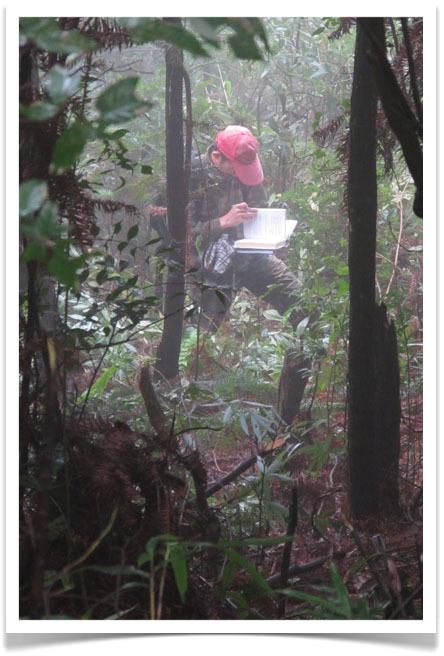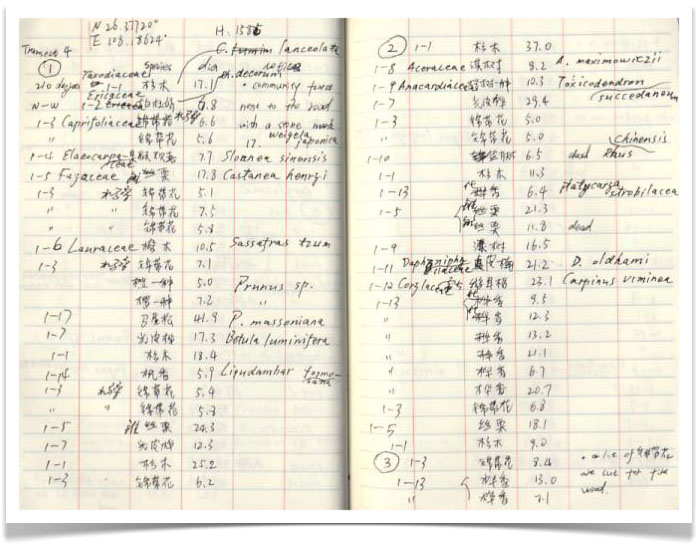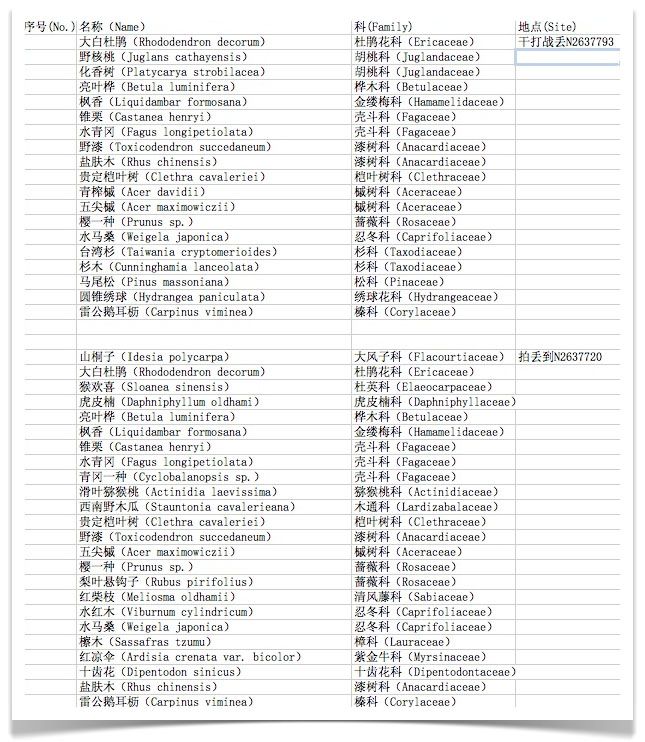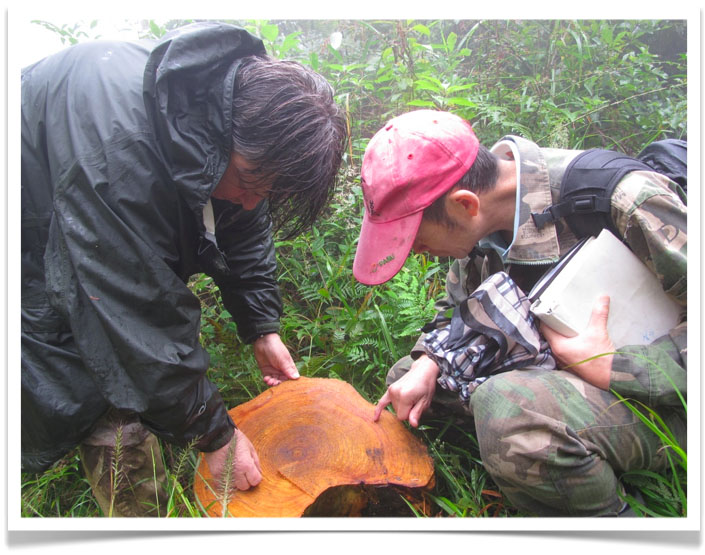Transect 3
 Saturday, October 15, 2011 at 3:42AM
Saturday, October 15, 2011 at 3:42AM 
From left to right, Mr. Yu from the Guizhou Academy of Forestry, Dr. Mark Ashton, professor of Silviculture at the Yale School of Forestry and Environmental Studies, and our local Miao field assistant, size up the (extremely steep) location selected for transect 3. Dr. Ashton appears unfazed. [NOTE: The Miao gentleman's t-shirt says Tennessee Titans; Dr. Ashton's t-shirt says dbh and has a white dotted line printed at breast height].











